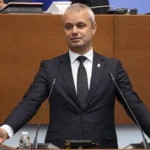The significant increase in military spending to 5% of GDP proposed by the newly elected U.S. President Donald Trump has become a topic of heated discussions in Europe. Will EU countries be able to afford such expenses? What does this mean for the economy and security of the continent?
Key Meeting in Warsaw
On Monday, January 13, the defense ministers of Germany, France, the United Kingdom, Italy, and Poland gathered near Warsaw to discuss this issue. This was the second meeting in a new format established after Trump’s victory in the U.S. elections.
At the beginning of the discussion, the German Defense Minister Boris Pistorius emphasized the importance of supporting a just peace for Ukraine. However, he expressed concern that excessive pressure from Trump could compel Kyiv to agree to unacceptable concessions to Russia.
Defense Spending: Ambitions versus Reality
Closest to the Goal — Poland
Currently, Poland spends about 4% of its GDP on defense, which is the highest level among NATO countries. The rest of the countries fall far behind, with most spending 2% or less.
Germany’s Perspective
Boris Pistorius stated that achieving the 5% of GDP target would require significant sacrifices. If Germany were to reach such a goal, it would represent over 40% of the national budget. He emphasized that the increase in military spending should align with the Alliance’s real objectives.
Italy: Defense and Economy
Italian Defense Minister Guido Crosetto stressed the need to cautiously increase defense spending, considering the economic crisis. He proposed combining the development of the defense industry with economic recovery, creating new jobs, and enhancing innovation.
France: Not Just Military Expenses
French Minister of Defense Sébastien Lecornu emphasized that security includes not only traditional defense but also protection against cyber threats, terrorism, and other dangers. He stressed that funds should be directed towards all aspects of societal protection, not just military goals.
Why Does 5% of GDP Face Resistance?
Economic Challenges
The economic crisis induced by the pandemic and other factors complicates the increase in defense spending for European countries. Ministers emphasize that financial stability must remain a priority.
New Security Challenges
According to Lecornu, modern warfare transcends traditional borders. “The situation is worse than during the Cold War,” he stated, noting that the digital space has become a new battlefield.
What Does Trump’s Call Mean for Europe?
NATO’s Reaction
Trump’s proposal has already elicited mixed responses within NATO. None of the Alliance countries, including the USA, currently spend 5% of GDP on defense.
Poland Leading the Way
Poland is close to achieving this goal. This enhances its role in regional security but also puts significant strain on its budget.
Other Countries Lagging Behind
Most NATO countries believe that the focus should be on rational spending, not on “static percentages,” as Boris Pistorius stated.
Conclusion: Will Europe Become Stronger?
Trump’s call to increase defense spending to 5% of GDP has become a serious challenge for Europe. This issue is not only about money but also about finding new approaches to security.
Will countries be able to find a balance between economic stability and military readiness? This will be a key test for European leaders in the coming years.


